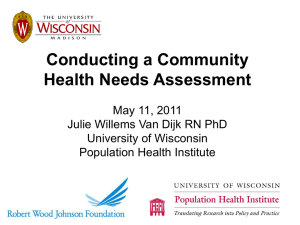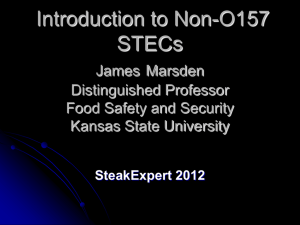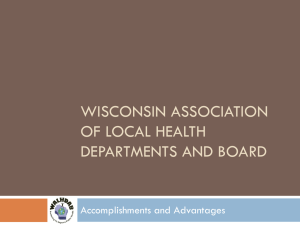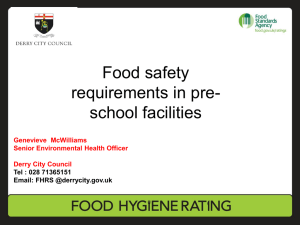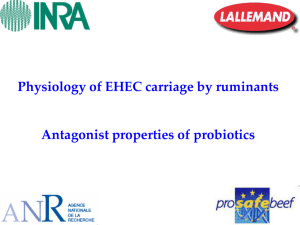PowerPoint slides - Wisconsin State Laboratory of Hygiene
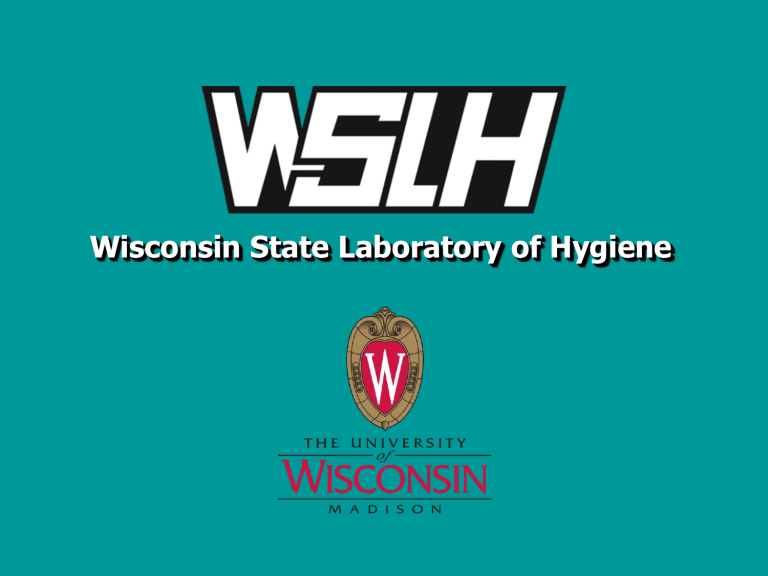
Wisconsin State Laboratory of Hygiene
Shiga Toxin-Producing E. coli in Wisconsin:
Past, Present and Future
WCLN Teleconference
November 3, 2010
Tim Monson, M.S.
Food and Waterborne Disease Program
Wisconsin State Laboratory of Hygiene mony@mail.slh.wisc.edu
WISCONSIN STATE
LABORATORY OF HYGIENE
2
Objectives
• Explain why it is important for laboratories to routinely test stool specimens for the presence of Shiga toxin or STEC
• Describe current STEC diagnostic and surveillance activities going on in Wisconsin and their impact at both state and national levels
• Discuss expanded efforts to detect STEC in
Wisconsin and what role your laboratory may play in these efforts in the future.
WISCONSIN STATE
LABORATORY OF HYGIENE
3
History of STEC Testing in WI
20056 WI clinical laboratories testing stool for Shiga toxin
20068 laboratories testing
2007 * 10 laboratories testing
200813 laboratories testing
2009 ƚ
13 laboratories testing
2010Currently 28 WI labs testing
* Immunocard STAT!® EHEC available ƚ CDC Clinical Laboratory Guidelines on the market for STEC testing published
WISCONSIN STATE
LABORATORY OF HYGIENE
4
Top Non-O157 STEC Serogroups:
U.S. (CDC data) and WI
Serogroup
O26
O111
O103
O121
O45
O145
U.S. (%)
22
16
12
9
7
5
WI (%)
24
19
25
6
9
4
WISCONSIN STATE
LABORATORY OF HYGIENE
5
The Six Most Common Human
Non-O157 STEC Serogroups
WISCONSIN STATE
LABORATORY OF HYGIENE
6
Wisconsin STEC Prevalence * :
Year STEC O157 non-O157
2006 # 60 42 (70%) 18 (30%)
2007
2008
2009
Total
106
151
125
55 (52%)
85 (56%)
68 (54%)
442 250 ( 57% )
51 (48%)
66 (44%)
57 (46%)
192 ( 43% )
* Data only from those WI clinical laboratories performing Shiga toxin screening
# Numbers low due to smaller number of clinical labs screening for Shiga toxins in 2006; data skewed towards outbreak
E. coli O157:H7 due to the national spinach
WISCONSIN STATE
LABORATORY OF HYGIENE
7
Outbreaks of Non-O157 STEC
Infections, U.S. (CDC Unpublished Data)
Year
1990
1994
1999
1999
2000
2001
2001
2004
2005
2005
2006
2006
2006
WISCONSIN STATE
LABORATORY OF HYGIENE
Serogroup
O111
O104
O121
O111
O103
O111
O26
O111
O45
O26
O45
O121
O121
Exposure/Vehicle
Unknown
Milk
Lake water
Salad bar
Punch
Day care
Lake water
Apple cider
Food handler
Day care
Day care
Day care
Salad
8
Recent High Profile STEC Outbreaks
E. coli O111 infections linked to OK restaurant
E. coli O145 infections linked to romaine lettuce
WISCONSIN STATE
LABORATORY OF HYGIENE
9
Current National Clusters:
WI STEC Isolate Link
• PulseNet cluster 1009MLEXD-1
– E. coli O111
– Isolates from NJ, MN and WI
– No attribution determined at this time
• PulseNet cluster 1009MLEXD-2
– E. coli O111
– Isolates from PA, TX and WI
– No attribution determined at this time
WISCONSIN STATE
LABORATORY OF HYGIENE
10
Is Routine Shiga Toxin Testing
Justified in the Clinical Laboratory???
WISCONSIN STATE
LABORATORY OF HYGIENE
11
Guidelines for the Clinical Laboratory:
WISCONSIN STATE
LABORATORY OF HYGIENE
12
Guidelines for the Clinical Laboratory:
• All stools submitted for testing from patients with acute, communityacquired diarrhea should be cultured for O157 STEC on selective and differential media
• Stools from patients with acute, community-acquired diarrhea should be simultaneously tested for non-O157
STEC with a test that detects either
Shiga toxins or the genes that encode for these toxins
WISCONSIN STATE
LABORATORY OF HYGIENE
13
Guidelines for the Clinical Laboratory:
• All O157 STEC isolates should be forwarded as soon as possible to a state or local public health laboratory
(PHL) for confirmation and molecular characterization (PFGE, MLVA, virulence genes)
• Detection of STEC or Shiga toxin should be promptly reported to the physician, PHL and proper public health authorities
WISCONSIN STATE
LABORATORY OF HYGIENE
14
Guidelines for the Clinical Laboratory:
• Any specimens or enrichment broths in which Shiga toxin or STEC has been detected but from which no O157
STEC isolates are recovered, should be forwarded as soon as possible to a state or local public health laboratory for isolation of the STEC
WISCONSIN STATE
LABORATORY OF HYGIENE
15
STEC- Background Information
• CDC estimates 19% of O157 STEC and
9% of non-O157 STEC are outbreak related (majority of cases sporadic)
• STEC are low-infectious dose organisms (10-100 cells)
• STEC virulence dependent upon which virulence factors are present in a given strain (Stx1/Stx2, eae, Ehly); evidence suggests Stx and eae are most significant predictors of serious illness
WISCONSIN STATE
LABORATORY OF HYGIENE
16
CDC
WISCONSIN STATE
LABORATORY OF HYGIENE
17
CDC
WISCONSIN STATE
LABORATORY OF HYGIENE
18
Incidence of Reported O157:H7
Infections, FoodNet Sites, 2000-09
WISCONSIN STATE
LABORATORY OF HYGIENE
19
Incidence of All Reported STEC
Infections, FoodNet Sites, 2000-09
WISCONSIN STATE
LABORATORY OF HYGIENE
20
Justification for STEC Testing
• E. coli O157:H7 culture only is not sufficient for detection of all STEC
• Bloody diarrhea is not a reliable indicator of STEC infection
• No adequate medium for isolation of non-O157 STEC organisms
• Culture for E. coli O157:H7 still recommended concurrently with Shiga toxin testing; fastest way to ID O157
STEC
WISCONSIN STATE
LABORATORY OF HYGIENE
21
E. Coli
O157:H7 on SMAC Plate
WISCONSIN STATE
LABORATORY OF HYGIENE
22
Non-O157 STEC on SMAC Plate
WISCONSIN STATE
LABORATORY OF HYGIENE
23
Justification for STEC Testing
• Early identification and treatment of patients that might develop HUS
– 15% of culture + E. coli O157:H7 patients < 10 yrs of age will develop HUS
– Strong evidence suggesting that STEC isolates that produce Stx2, and in particular Stx2 only, have a higher likelihood to lead to HUS development
– Evidence supporting improved outcomes in individuals that receive prompt intervention
(parenteral fluid admin. may prevent renal damage)
WISCONSIN STATE
LABORATORY OF HYGIENE
24
Justification for STEC Testing
• Cost Effectiveness
– Varies with product manufacturer and whether the product differentiates Stx1 from Stx2
– Possible to generate positive revenue for the laboratory
– Reimbursement for STEC testing may be much greater than for conventional culture
• Prevention
WISCONSIN STATE
LABORATORY OF HYGIENE
25
Prevention of Illness is Hard to
Measure; Hard to Sell
• Even though STEC are low prevalence, single case of HUS may cost the healthcare system over $6.1 million
WISCONSIN STATE
LABORATORY OF HYGIENE
26
Justification for STEC Testing
• STEC may be as or more prevalent than other enteric bacterial pathogens routinely tested for:
– STEC may be found in 0-4% of stools
– Salmonella may be found in 1.9-4.8%
– Shigella may be found in 0.2-3.1%
– Campylobacter may be found in 0.9-
9.3%
FoodNet Data, CDC
WISCONSIN STATE
LABORATORY OF HYGIENE
27
What Does the Future Hold for STEC Testing?
WISCONSIN STATE
LABORATORY OF HYGIENE
28
Future of STEC Testing
• In 2011, USDA Food Safety Inspection
Service (FSIS) may begin testing for non-O157 STEC in food
– Presumptive positive → PCR positive screen for Stx1, Stx2 or both
– Confirmed positive → PCR positive, eae positive and serogroup identified for isolated colony (adulterant)
– How will these isolates compare to human isolates?
WISCONSIN STATE
LABORATORY OF HYGIENE
29
Future of STEC Testing
• New Public Health Laboratory STEC
Testing Recommendations
– More screening performed at the public health laboratory
– Fewer isolate submissions to CDC for virulence marker determination
– Fewer CDC lab reports back to clinical laboratories
WISCONSIN STATE
LABORATORY OF HYGIENE
30
“Shiga toxin-producing
Escherichia coli
(STEC): Isolation and Characterization Guidance for Public Health Laboratories”
Prepared by the APHL STEC Working Group:
Robyn Atkinson – TN
John Besser – MN*
Cheryl Bopp – CDC
Chris Carlson - SD
Claudia Crandall – CA
Cindy Fisher – UT
Karim George - KY
Peter Gerner-Smidt – CDC
Stephen Gladbach – MO
*Currently at CDC
WISCONSIN STATE
LABORATORY OF HYGIENE
L. Hannah Gould – CDC
Cami Hartley - NC
Hugh Maguire – CO
Tim Monson – WI
Debbie Rutledge – DE
Sharon Shea - APHL
Patricia Somsel - MI
Nancy Strockbine – CDC
31
“Shiga toxin-producing
Table of Contents
Escherichia coli
Public Health Laboratories”
(STEC):
Isolation and Characterization Guidance for
Introduction
Chapter 1
Chapter 2
Chapter 3
Chapter 4
Chapter 5
Chapter 6
Chapter 7
Chapter 8
Chapter 9
Chapter 10
Chapter 11
Chapter 12
Appendices
A.
B.
C.
WISCONSIN STATE
LABORATORY OF HYGIENE
Public Health Lab Best Practice Recommendations
Clinical Laboratory Best Practice Recommendations
History, Biology, Pathogenesis, and Epidemiology
Testing and Diagnosis
Culture and Biochemical Characterization
Non-Molecular Characterization
Molecular Detection and Characterization
Molecular Epidemiology
Hemolytic Uremic Syndrome
Follow-up Testing and Special Outbreak Circumstances
Reporting of Results
Shipping and Receiving
Toxin Gene Profiles
Specimen Submission for Human Serology Testing
Clinical Guidelines
32
Future of STEC Testing
• Enhanced HUS case surveillance
– Asking clinical laboratories and local health officials to help identify cases of
HUS
– Majority of HUS cases are due to STEC; many cases go undiagnosed
– May solicit submission of sera and stool specimens for STEC testing at WSLH
(IMS) or CDC (serology)
WISCONSIN STATE
LABORATORY OF HYGIENE
33
Future of STEC Testing
• Expanded routine Shiga toxin testing by WI clinical laboratories
– Increased awareness of non-O157
STEC; more clinical and food data to support comprehensive testing
– OutbreakNet Sentinel Site grant activities; one goal is to expand and enhance statewide STEC testing in clinical laboratories
WISCONSIN STATE
LABORATORY OF HYGIENE
34
Future of STEC Testing
• Improved Shiga toxin and virulence factor detection methodologies are in development
– Luminex platform shows promise (CDC)
– Rapid and sensitive methods to detect the presence of Shiga toxin, eae, Ehly and other virulence factors
– Ability to serogroup STEC isolates at the same time for surveillance purposes
WISCONSIN STATE
LABORATORY OF HYGIENE
35
Summary
• Many factors to justify routine Shiga toxin screening in stools were presented
• Clinical laboratories are an integral part of Shiga toxin detection and surveillance activities in WI and the
U.S.
• Efforts are under way to enhance current state clinical laboratory Shiga toxin testing capabilities
WISCONSIN STATE
LABORATORY OF HYGIENE
36
Submission of STEC Specimens to WSLH
• As with other enteric pathogens, STEC specimens may be submitted to WSLH via overnight courier as part of the
Wisconsin Enteric Pathogen
Surveillance (WEPS) Program
• Contact Dunham Express for courier:
800-236-7127
• For technical questions, call WSLH:
800-862-1013
WISCONSIN STATE
LABORATORY OF HYGIENE
37
Questions or Comments?
WISCONSIN STATE
LABORATORY OF HYGIENE
38
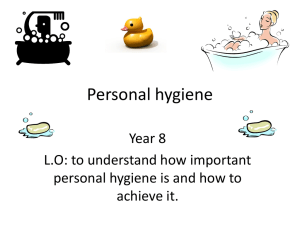
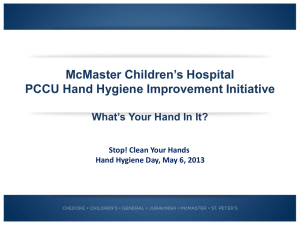
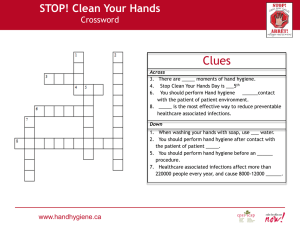
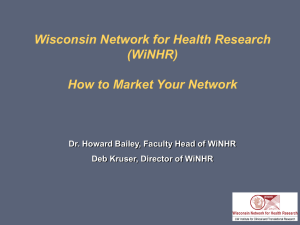
![[Company Name] Certificate of Completion](http://s2.studylib.net/store/data/005402466_1-8a11f4ced01fd5876feee99f8d8e6494-300x300.png)
